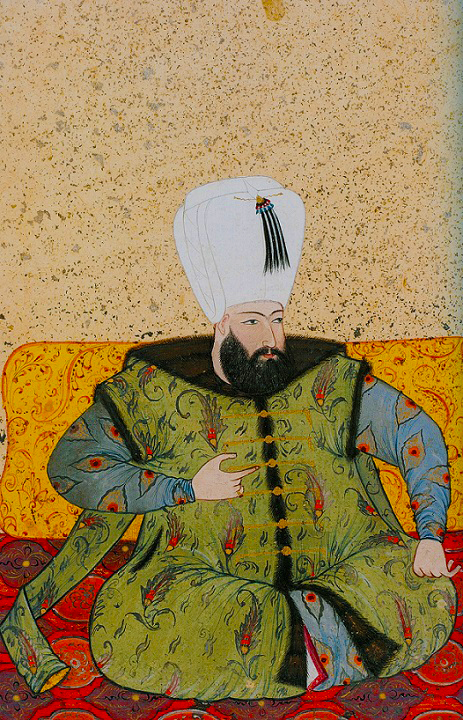|
Ňěehzade Mosque
The Ňěehzade Mosque () is a 16th-century Ottoman imperial mosque located in the district of Fatih, on the third hill of Istanbul, Turkey. It was commissioned by Suleiman the Magnificent as a memorial to his son Ňěehzade Mehmed who died in 1543. The mosque was one of the earliest and most important works of architect Mimar Sinan and is one of the signature works of Classical Ottoman architecture. History The construction of the Ňěehzade Complex (''k√ľlliye'') was ordered by the Ottoman Sultan Suleiman the Magnificent as a memorial to his favorite son Ňěehzade Mehmed (born 1521) who died in 1543 while returning to Istanbul after a victorious military campaign in Hungary. Mehmed was the eldest son of Suleiman's only legal wife H√ľrrem Sultan - although not his eldest son - and before his untimely death he was primed to accept the sultanate following Suleiman's reign. Suleiman is said to have personally mourned the death of Mehmed for forty days at his temporary tomb in Istanbul ... [...More Info...] [...Related Items...] OR: [Wikipedia] [Google] [Baidu] |
Istanbul
Istanbul is the List of largest cities and towns in Turkey, largest city in Turkey, constituting the country's economic, cultural, and historical heart. With Demographics of Istanbul, a population over , it is home to 18% of the Demographics of Turkey, population of Turkey. Istanbul is among the List of European cities by population within city limits, largest cities in Europe and List of cities proper by population, in the world by population. It is a city on two continents; about two-thirds of its population live in Europe and the rest in Asia. Istanbul straddles the Bosphorus‚ÄĒone of the world's busiest waterways‚ÄĒin northwestern Turkey, between the Sea of Marmara and the Black Sea. Its area of is coterminous with Istanbul Province. Istanbul's climate is Mediterranean climate, Mediterranean. The city now known as Istanbul developed to become one of the most significant cities in history. Byzantium was founded on the Sarayburnu promontory by Greek colonisation, Greek col ... [...More Info...] [...Related Items...] OR: [Wikipedia] [Google] [Baidu] |
Murat IV
Murad IV (, ''MurńĀd-ńĪ RńĀbi Ņ''; , was the sultan of the Ottoman Empire from 1623 to 1640, known both for restoring the authority of the state and for the brutality of his methods. Murad IV was born in Constantinople, the son of Sultan Ahmed I (r. 1603‚Äď17) and K√∂sem Sultan. He was brought to power by a palace conspiracy when he was just 11 years old, and he succeeded his uncle Mustafa I (r. 1617‚Äď18, 1622‚Äď23). Until he assumed absolute power on 18 May 1632, the empire was ruled by his mother, K√∂sem Sultan, as ''nńĀ ĺib-i salŠĻ≠anat'' (regent). His reign is most notable for the Ottoman‚ÄďSafavid War, of which the outcome would partition the Caucasus between the two Imperial powers for around two centuries, while it also roughly laid the foundation for the current Turkey‚ÄďIran‚ÄďIraq borders. Early life Murad IV was born on 27 July 1612 to Ahmed I (reign 16031617) and his consort and later wife K√∂sem Sultan, an ethnic Gree ... [...More Info...] [...Related Items...] OR: [Wikipedia] [Google] [Baidu] |
Blue Mosque, Istanbul
The Blue Mosque, officially the Sultan Ahmed Mosque (), is an Ottoman-era historical imperial mosque located in Istanbul, Turkey. It was constructed between 1609 and 1617 during the rule of Ahmed I and remains a functioning mosque today. It also attracts a large number of tourists and is one of the most iconic and popular monuments of Ottoman architecture. The mosque has a classical Ottoman layout with a central dome surrounded by four semi-domes over the prayer hall. It is fronted by a large courtyard and flanked by six minarets. On the inside, it is decorated with thousands of Iznik tiles and painted floral motifs in predominantly blue colours, which give the mosque its popular name. The mosque's ''k√ľlliye'' (religious complex) includes Ahmed's tomb, a madrasa, and several other buildings in various states of preservation. The mosque was built next to the former Hippodrome and stands across from the Hagia Sophia, another popular tourist site. The Blue Mosque was include ... [...More Info...] [...Related Items...] OR: [Wikipedia] [Google] [Baidu] |
Minbar
A minbar (; sometimes romanized as ''mimber'') is a pulpit in a mosque where the imam (leader of prayers) stands to deliver sermons (, ''khutbah''). It is also used in other similar contexts, such as in a Hussainiya where the speaker sits and lectures the congregation. Etymology The word is a derivative of the Arabic root ''n-b-r'' ("to raise, elevate"); the Arabic plural is ''manńĀbir'' (). Function and form The minbar is symbolically the seat of the imam who leads prayers in the mosque and delivers sermons. In the early years of Islam, this seat was reserved for the Islamic prophet Muhammad and later for the caliphs who followed him, each of whom was officially the imam of the whole Muslim community. It eventually became standard for all Friday mosques and was used by the local imam, but it retained its significance as a symbol of authority. While minbars are roughly similar to church pulpits, they have a function and position more similar to that of a church lectern ... [...More Info...] [...Related Items...] OR: [Wikipedia] [Google] [Baidu] |
Mihrab
''Mihrab'' (, ', pl. ') is a niche in the wall of a mosque that indicates the ''qibla'', the direction of the Kaaba in Mecca towards which Muslims should face when praying. The wall in which a ''mihrab'' appears is thus the "''qibla'' wall". The '' minbar'', which is the raised platform from which an imam (leader of prayer) addresses the congregation, is located to the right of the ''mihrab''. Etymology The origin of the word ''miŠł•rńĀb'' is complicated, and multiple explanations have been proposed by different sources and scholars. It may come from Old South Arabian (possibly Sabaic) ''mŠł•rb'' meaning a certain part of a palace, as well as "part of a temple where ''tŠł•rb'' (a certain type of visions) is obtained," from the root word ''Šł•rb'' "to perform a certain religious ritual (which is compared to combat or fighting and described as an overnight retreat) in the ''mŠł•rb'' of the temple." It may also possibly be related to Ethiopic ''m…ôk ∑rab'' "temple, sanctua ... [...More Info...] [...Related Items...] OR: [Wikipedia] [Google] [Baidu] |
Ottoman Baroque Architecture
Ottoman Baroque architecture, also known as Turkish Baroque, was a period in Ottoman architecture in the 18th century and early 19th century which was influenced by European Baroque architecture. Preceded by the changes of the Tulip period, Tulip Period and Tulip Period architecture, the style marked a significant departure from the Classical Ottoman architecture, classical style of Ottoman architecture and introduced new Ottoman decoration, decorative forms to mostly traditional Ottoman building types. It emerged in the 1740s during the reign of Mahmud I () and its most important early monument was the Nuruosmaniye Mosque, completed in 1755. Later in the 18th century, new building types were also introduced based on European influences. The last fully Baroque monuments, such as the Nusretiye Mosque, were built by Mahmud II () in the early 19th century, but during this period new European-influenced styles were introduced and supplanted the Baroque. Background From the 18th centu ... [...More Info...] [...Related Items...] OR: [Wikipedia] [Google] [Baidu] |
Shading
Shading refers to the depiction of depth perception in 3D models (within the field of 3D computer graphics) or illustrations (in visual art) by varying the level of darkness. Shading tries to approximate local behavior of light on the object's surface and is not to be confused with techniques of adding shadows, such as shadow mapping or shadow volumes, which fall under global behavior of light. In drawing Shading is used traditionally in drawing for depicting a range of darkness by applying media more densely or with a darker shade for darker areas, and less densely or with a lighter shade for lighter areas. Light patterns, such as objects having light and shaded areas, help when creating the illusion of depth on paper. There are various techniques of shading, including cross hatching, where perpendicular lines of varying closeness are drawn in a grid pattern to shade an area. The closer the lines are together, the darker the area appears. Likewise, the farther apart the lin ... [...More Info...] [...Related Items...] OR: [Wikipedia] [Google] [Baidu] |
DiyarbakńĪr
DiyarbakńĪr is the largest Kurdish-majority city in Turkey. It is the administrative center of DiyarbakńĪr Province. Situated around a high plateau by the banks of the Tigris river on which stands the historic DiyarbakńĪr Fortress, it is the administrative capital of the DiyarbakńĪr Province of southeastern Turkey. It is the second-largest city in the Southeastern Anatolia Region. As of December 2024, the Metropolitan Province population was 1 833 684 of whom 1 164 940 lived in the built-up (or metro) area made of the 4 urban districts ( Bańülar, KayapńĪnar, Sur and YeniŇüehir). DiyarbakńĪr has been a main focal point of the conflict between the Turkish state and various Kurdish separatist groups, and is seen by many Kurds as the de facto capital of Kurdistan. The city was intended to become the capital of an independent Kurdistan following the Treaty of S√®vres, but this was disregarded following subsequent political developments. On 6 February 2023 DiyarbakńĪr ... [...More Info...] [...Related Items...] OR: [Wikipedia] [Google] [Baidu] |
Ottoman Architecture
Ottoman architecture is an architectural style or tradition that developed under the Ottoman Empire over a long period, undergoing some significant changes during its history. It first emerged in northwestern Anatolia in the late 13th century and developed from earlier Anatolian Seljuk architecture, Seljuk Turkish architecture, with influences from Byzantine architecture, Byzantine and Iranian architecture, Iranian architecture along with other architectural traditions in the Middle East. Early Ottoman architecture experimented with multiple building types over the course of the 13th to 15th centuries, progressively evolving into the Classical Ottoman architecture, classical Ottoman style of the 16th and 17th centuries. This style was a mixture of native Turkish tradition and influences from the Hagia Sophia, resulting in monumental mosque buildings focused around a high central dome with a varying number of semi-domes. The most important architect of the classical period is Mimar ... [...More Info...] [...Related Items...] OR: [Wikipedia] [Google] [Baidu] |
Semi-dome
In architecture, a semi-dome (or half-dome) is a half dome that covers a semi-circular area in a building. Architecture Semi-domes are a common feature of apses in Ancient Roman and traditional church architecture, and in mosques and iwans in Islamic architecture. A semi-dome, or the whole apse, may also be called a conch after the scallop shell often carved as decoration of the semi-dome (all shells were conches in Ancient Greek), though this is usually used for subsidiary semi-domes, rather than the one over the main apse. Small semi-domes have been often decorated in a shell shape from ancient times, as in Piero della Francesca's ''Throned Madonna with saints and Federigo da Montefeltro'', and the example in the gallery below. Islamic examples may use muqarnas decorative corbelling, while in Late Antique, Byzantine and medieval church architecture the semi-dome is the classic location for a focal mosaic, or later fresco. Found in many Ancient Greek exedras, the semi-dome bec ... [...More Info...] [...Related Items...] OR: [Wikipedia] [Google] [Baidu] |








